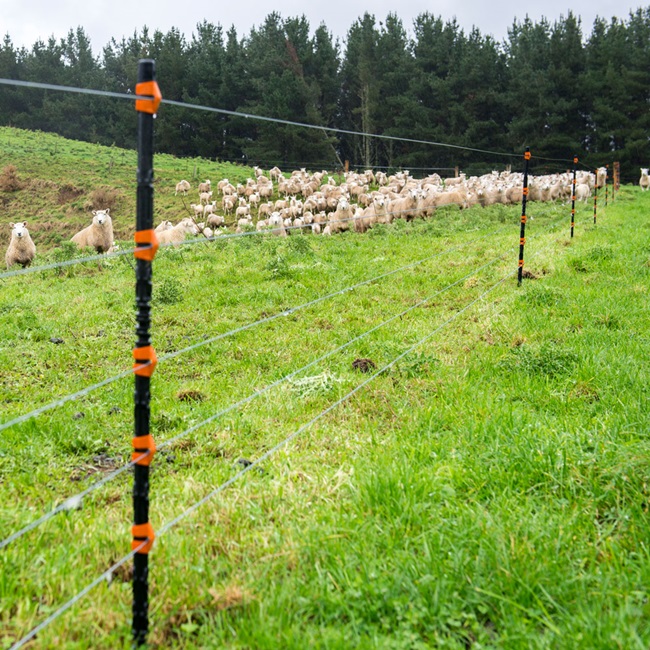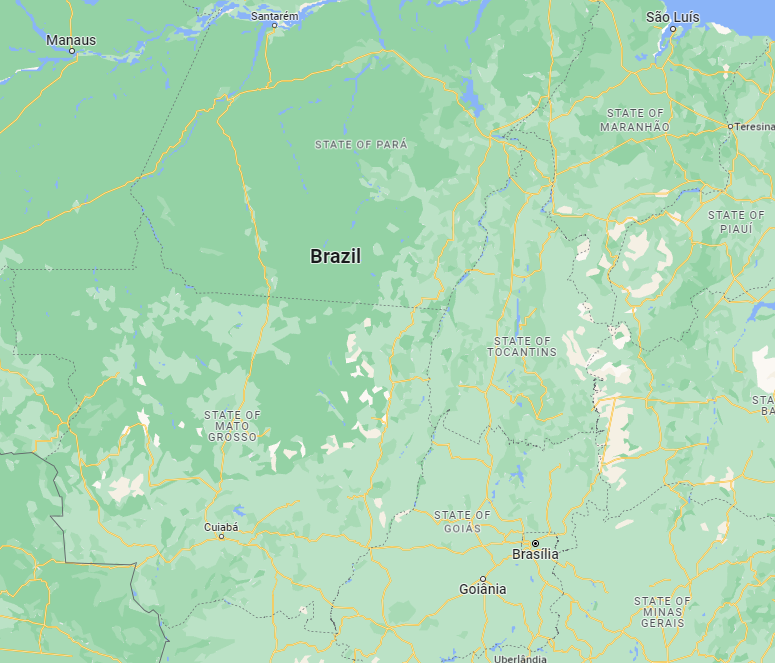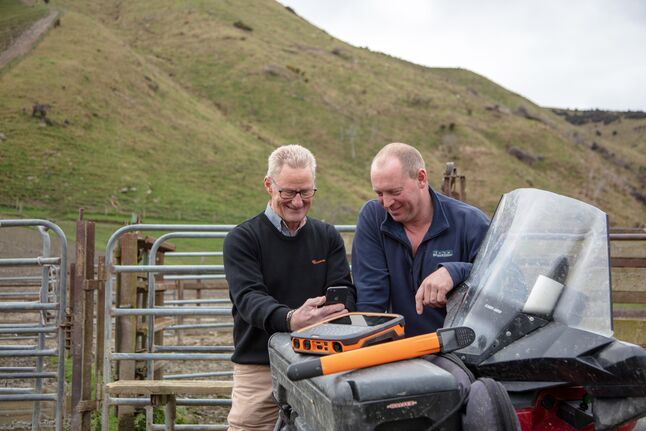O que é a cercagem elétrica?
É um sistema em o pasto é dividido em piquetes menores, permitindo que o gado se concentre em um pequeno piquete por um período, antes de passar para o próximo. O tempo que o gado passa em cada piquete dependerá do tipo de operação agrícola que você está executando e de qual cultura/pasto. O manejo de pastagens também é conhecido como pastejo rotacional, pastejo gerenciado, pastejo cronometrado, pastejo diferido e manejo holístico.
Por que é eficaz?
O pastoreio gerenciado permite um período de descanso para os piquetes, dando tempo para que o pasto cresça novamente de forma eficiente e melhore seu rendimento. Quando bem feito, pode ajudar os fazendeiros a aumentar a produtividade, o ganho de peso do gado e reduzir o desperdício.
A forma tradicional de pastagem é chamada de "manejo fixo", onde o gado pode pastar como quiser em um grande piquete. Este método faz com que o gado coma a grama que gosta primeiro, o que pode fazer com que essas espécies sejam consumidas demais e as espécies menos desejáveis cresçam em abundância. Isso pode resultar em uma invasão de ervas daninhas, raízes fracas e menores taxas de crescimento.
Considerações chave
O número e o tamanho das áreas de pastagem
É importante garantir que as áreas de pastagem possam descansar e crescer novamente.
A duração do tempo de pastejo
Quanto mais regular for a rotação, de preferência a cada poucos dias, mais tempo o pasto passará crescendo em vez de ser pastado.
Número de animais em cada área de pastagem
A densidade do rebanho determina a eficiência com que a área alocada é pastoreada.
Como funciona o pastoreio rotacionado?
Seccionar o pasto e dar ao gado horários definidos para pastejo permite o crescimento ideal da grama. Quando a grama é muito curta ou muito longa, a taxa de crescimento é lenta. Pastejar a grama até o nível “Cachinhos Dourados” – nem muito curta nem muito longa – significa que ela pode crescer novamente na taxa ideal.
A criação de mais piquetes menores (ou "subdivisões") e a movimentação mais frequente do gado entre eles, significa que cada área de pastagem passa mais tempo sem gado presente, aumentando o período de recuperação do pasto e permitindo que ele se torne mais espesso e forte tanto abaixo quanto acima do solo.
Melhor prática
Para o melhor pastejo, os pastos são alternados a cada 1 ou 2 dias. O número de animais e o tamanho das subdivisões são organizados de modo que, durante o intervalo de pastejo, o pasto seja utilizado uniformemente até o nível residual desejado. Isso requer pressão do estoque para evitar o pastejo seletivo. Ao ter mais subdivisões e, portanto, movimentação mais frequente do rebanho, a eficiência do pastejo melhora. Em muitas regiões, é possível atingir mais do que o dobro do ganho de peso por acre, implementando um regime de pastejo gerenciado ou rotacional.
Otimizando a qualidade e a produção
Ter pastagens saudáveis ajuda a garantir a lucratividade por ter um suprimento infinito para sustento do gado. Cercas elétricas revolucionaram as técnicas de manejo de pastagens, fornecendo sistemas permanentes e portáteis para subdividir pastagens para um pastejo mais eficaz, mantendo a grama fresca, curta, de alta energia e palatável. Isso, em última análise, leva ao aumento da produção de leite e carne.
Como regra geral, uma combinação de cercas elétricas permanentes e portáteis fornecerá o melhor sistema de controle animal. Elas são de baixo custo, altamente confiáveis e configuráveis para atingir o padrão de pastejo que você precisa. Se houver uma boa cerca externa, um sistema de pastejo pode ser testado com apenas alguns carretéis, ringtops e um energizador solar portátil.
Uma vez alcançados os resultados desejados, um sistema de cerca elétrica permanente pode ser instalado para reduzir a necessidade de mão de obra para erguer cercas continuamente ou movimentar o gado.
Cercas Permanentes
Cercas elétricas permanentes são de baixo custo em comparação com cercas convencionais não-elétricas e duram mais. Cercas permanentes usam arame de cerca altamente condutivo e resistente à corrosão, junto com madeira, aço, fibra de vidro ou postes de linha isolados Gallagher, acoplados a componentes para manter as cercas com boa aparência e funcionando efetivamente por toda a vida.
O layout das cercas deve ser projetado para facilitar a movimentação do gado e permitir uma subdivisão maior usando cercas portáteis, o que significa melhor controle geral dos animais.
Portões e porteiras simplificam a movimentação do gado para a próxima área de pastagem, o que também resulta em melhores resultados no bem-estar animal.
Ver todos os produtos de cercas permanentes
Precisa de ajuda para
descobrir os produtos certos
e quantidades?
Cercas portáteis
Cercas elétricas portáteis são fáceis de transportar, montar e desmontar, permitindo flexibilidade total tanto dentro de um sistema de cerca elétrica permanente quanto dentro de um sistema de cerca tradicional não eletrificado, que usa energia de energizador portátil.
Os postes Ring Top ou Pigtail são uma opção popular para cercas portáteis para gado de corte e leite. Os carretéis multifios vêm com a opção de prender o fio em diferentes alturas para que possam ser usados para todos os outros animais.
Os carretéis seguram a fita, trança ou arame para a cerca portátil. Você pode usar apenas um carretel para cercas de linha única ou até quatro carretéis, presos a um suporte de carretel, para cercas multifios.
Fitas, fios e tranças são usados em cercas portáteis, em vez de arame galvanizado usado em cercas permanentes. Os condutores Gallagher são ideais para cercas elétricas portáteis, pois são leves, visíveis e fáceis de enrolar.
Ver todos os produtos de cercas portáteis
Precisa de ajuda para
descobrir os produtos certos
e quantidades?
A solução certa para suas necessidades
Uma visão interna dos produtos da Gallagher em ação




